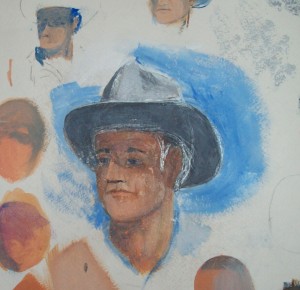
I wish there was a simple recipe for mixing skin colors. Goodness knows that I go through a ritual every time I attempt to paint a person’s flesh. Sadly, you can’t go to an art store and buy skin tones. Oh, some manufacturers advertise such, but I’ve tried some, and they’re nonsense as far as I’m concerned. I’ve found there is no such thing as one tube of paint or combination of colors that equals the overall effect of skin. The reason is because there are a myriad of interesting colors in the transparency of skin; and, most important, these interesting colors change with the affect of light and shadows.
Light is the greatest factor that determines skin color. When a face is affected by a warm light, the shadows become cool in temperature. However, shadows actually turn warm when affected by a cool north light. Unless you’re an artist, who would know? This means we artist have to be on our toes.
However, if you want a formula for skin colors and tones, keep in mind that most all person’s skin color has a predominance of red, yellow or blue. Some have more blue tones, while others have more red or yellow tones. This is beginning to sound like a lifetime of study, and guess what?…It is. Take for example everything I’ve said. Now, add to it a person with a ruddy complexion, or a person with a purplish-violet tone in areas of thinner skin such as the brow and eye area. This makes the recipe go right out the window.

Tip: If you paint people with a range of skin tones, it will help them look more realistic and alive rather than dull, flat, and mannequinesque, so be sure to look for areas of warm and cool in your model’s skin colors.
Tip: When painting with water colors try using quinacridone rose, raw sienna, and ultramarine blue. These colors are transparent and tend to represent the translucency of skin. They also can mix in a way that creates unlimited hues. It may not be perfect, but it works for me.
